Building Trust and Reducing Frustration in PayPal transactions
Enhancing PayPal's P2P Transaction Experience to increase user satisfaction
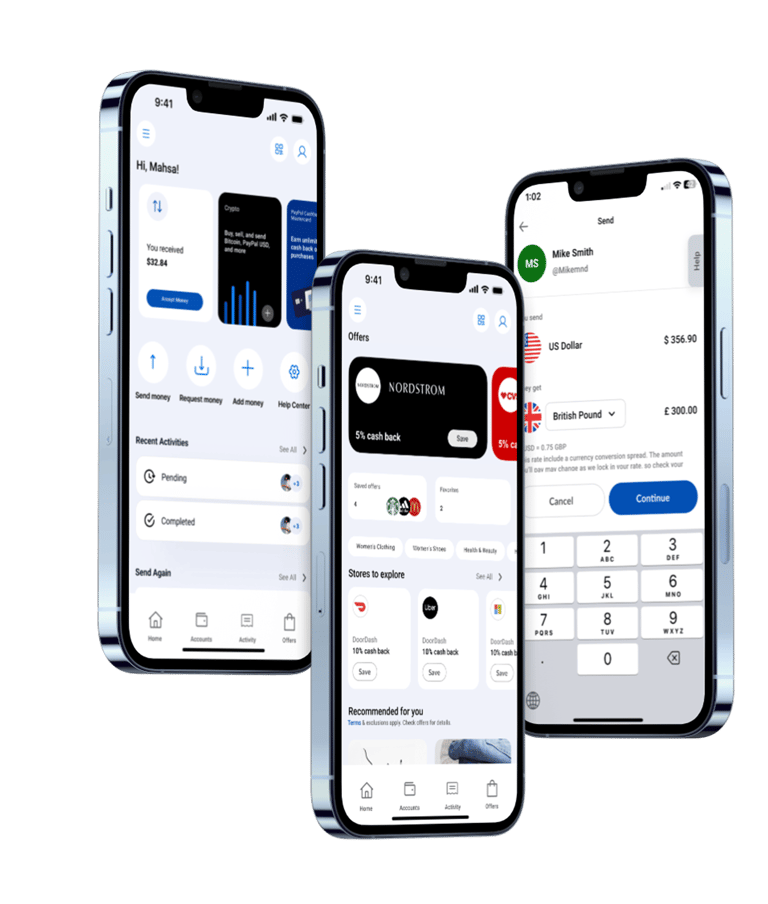

My Role:
User Researcher
UX/UI Designer
Team:
2 Mid-Level Designers
1 Senior UX Designer
Mentor:
Marzie Nadali
Duration:
6 Weeks
Introduction
A Transaction You Can Trust
This case study was part of a UX challenge where we focused on improving the user experience of products we frequently use. This exercise aimed to explore how UX can effectively address major business challenges through in-depth research, ideation, and thoughtful design.
As frequent PayPal users, we wanted to better understand some of the frustrations users face while completing transactions on the platform. Based on the pain points and opportunities we uncovered during our research, we decided to focus on the pre-transaction phase of PayPal’s user experience. By redesigning this crucial stage, we wanted to find out if we can address the issue though UX improvement.
Problem Statement
Many PayPal users feel frustrated and unsure when completing transactions, which makes them question the platform's reliability. Hidden fees, confusing navigation, and poor customer support leave users feeling lost and uncertain about the app’s security. This lack of trust leads some to seek out other payment options, ultimately affecting their overall satisfaction with PayPal.
Increase user satisfaction and trust by improving the P2P transaction experience on PayPal’s app, aiming to reduce user frustration and improve retention rates. By implementing user-centered design solutions and transparent communication, we seek to create a more intuitive and reliable platform for all users.
Business Objective
Expected Outcome
A seamless and informative post-transaction experience on PayPal’s app resulting in higher user satisfaction and engagement rates.
Our Initial Thoughts: Shaping Our Investigation
Users may feel insecure about the app due to the lack of an additional confirmation step before completing transactions, which can cause accidental payments.
Users may find the interface cluttered or difficult to navigate, particularly those who are less tech-savvy.
Users may appreciate personalized notification settings to choose when they are reminded of fees or pending payments, ensuring they’re always informed at the right time.
Users are often notified of charge fees too late in the transaction process, causing frustration and a lack of trust in the platform.
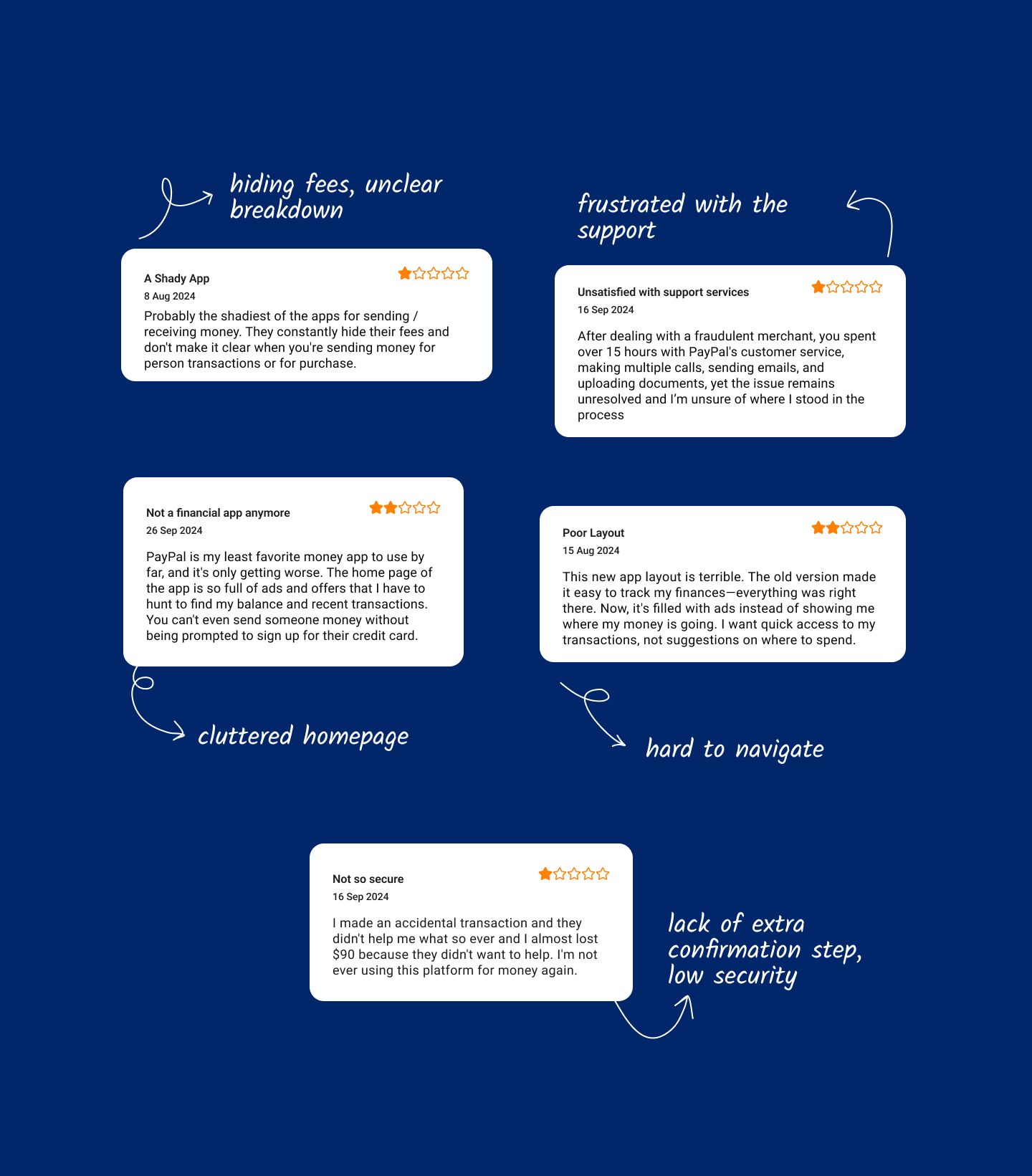

What are PayPal users saying
To get a clear understanding of the issues users face, we conducted a combination of desk research and user interviews. This approach allowed us to capture deeper understanding of users’ problems to guide our design process.
We interviewed 5 active PayPal users, including a mix of tech-savvy and non-tech-savvy individuals, as well as both frequent and occasional users.
Main focus of our interview questions:
Gaining insights into user experiences with PayPal’s transaction flow and identifying pain points
Investigating users’ uncertainties
Understanding customer support experience
Evaluating the overall functionality of the app compared to other payment platforms
User Interview
Taking a Deep Dive:
Understanding PayPal Users on a Deeper Level
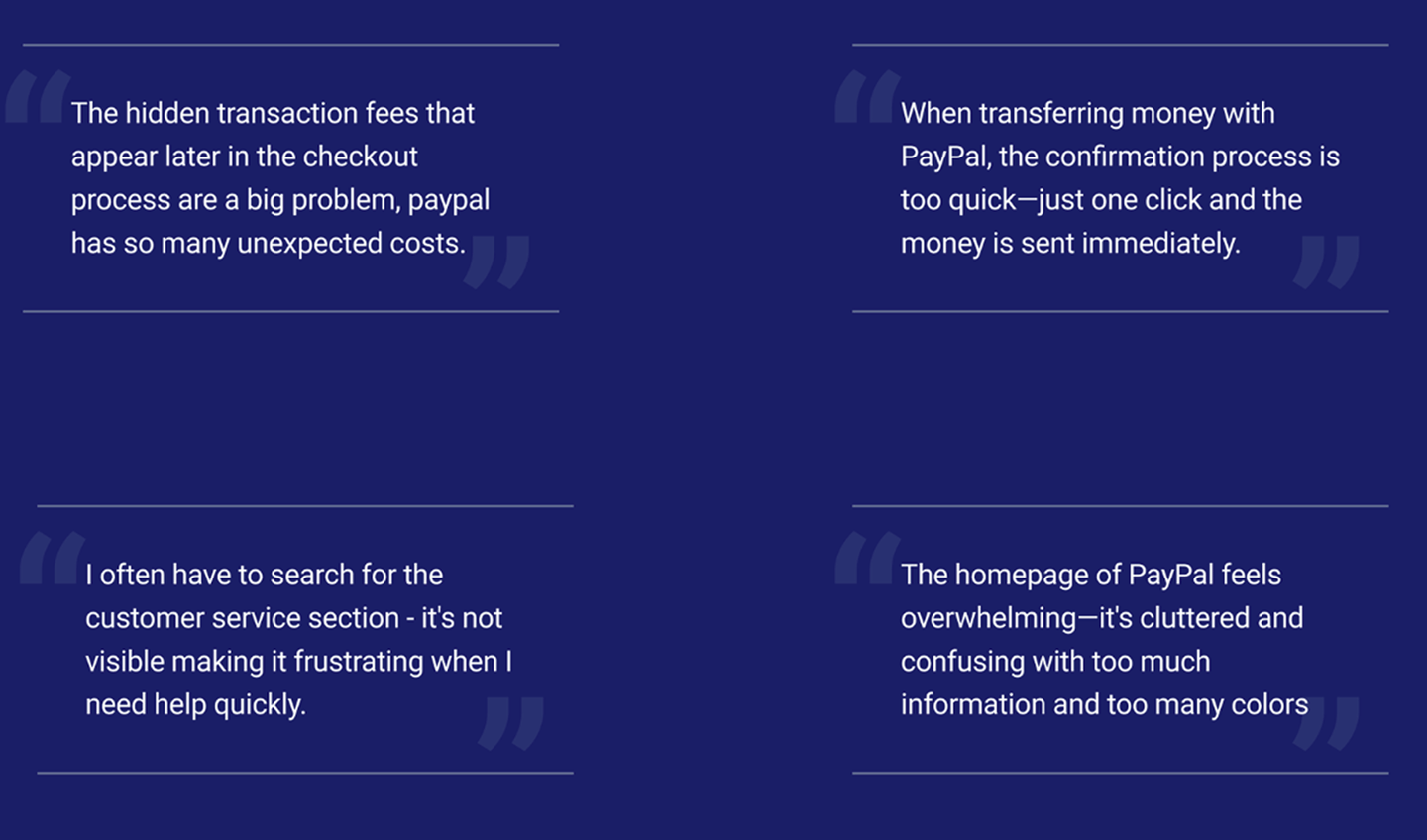

Common challenges of PayPal
We used an Affinity Diagram to analyze and organize data from interviews and desk research, helping us uncover patterns in users' experiences during the pre-transaction phase.
Key Insights by Themes








Fees and charges
Users are frustrated by the lack of clear and upfront fee warnings, which leads to confusion and dissatisfaction with unexpected charges during transactions.
Information Architecture
Users having difficulty to locate essential features like customer support. Additionally, they find the homepage cluttered with ads and offers, contributing to a disorganized experience.
Security and Trust
Users have a lack of trust in PayPal's security due to issues like insufficient confirmation steps, which lead to accidental transactions and uncertainty about the platform's reliability.
Customer Support
Users are frustrated with customer support due to long wait times, unhelpful responses, and unresolved issues. The in-app support is also not user-friendly, leaving users without effective assistance.
Defining Paypal Personas:
Meet Linda and Anil
Two Users, Two Journeys
Based on our research findings and analysis, we came up with 2 distinct personas representing the primary user groups we focused on.
The Tech-Savvy Frequent User
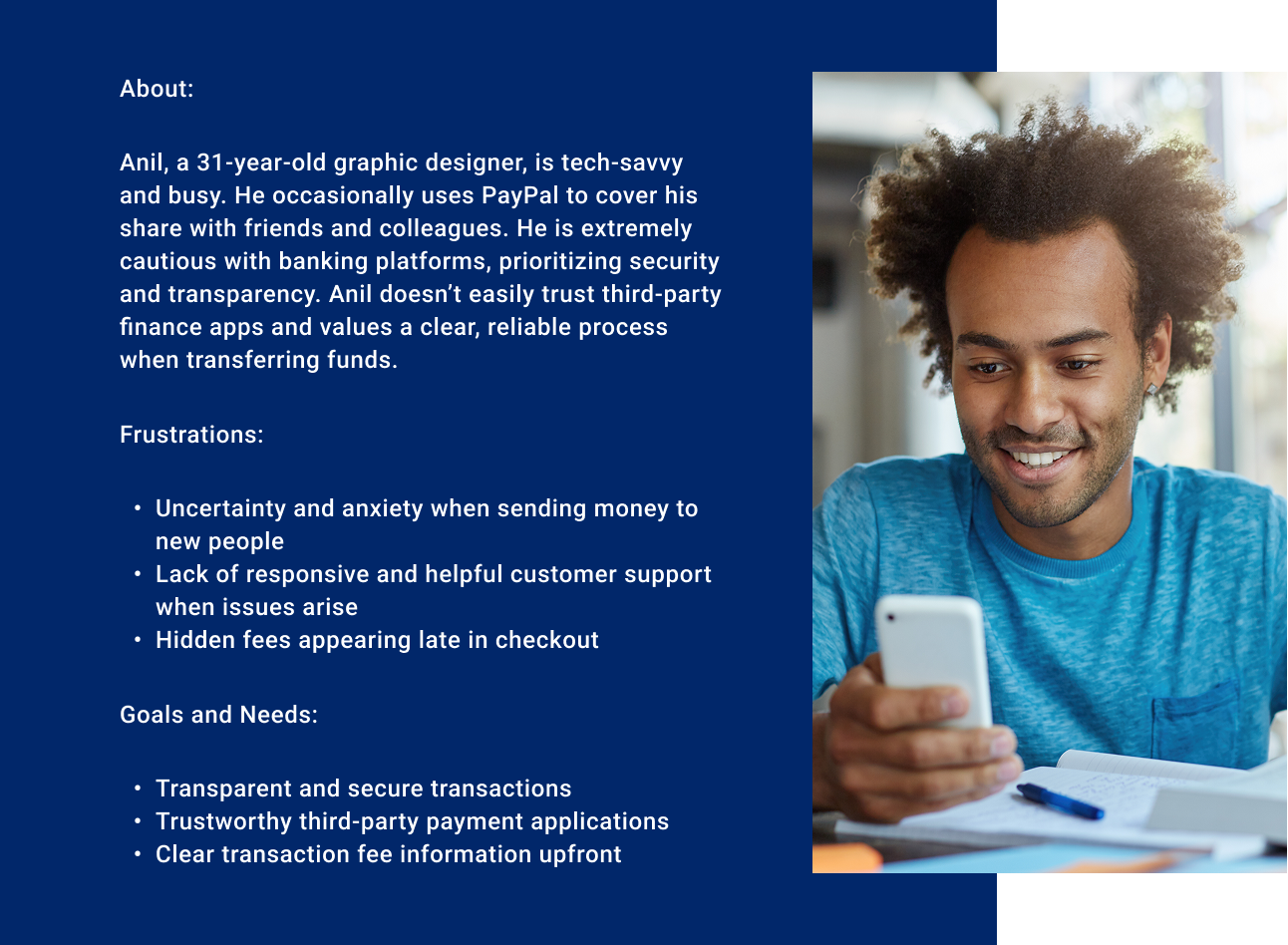

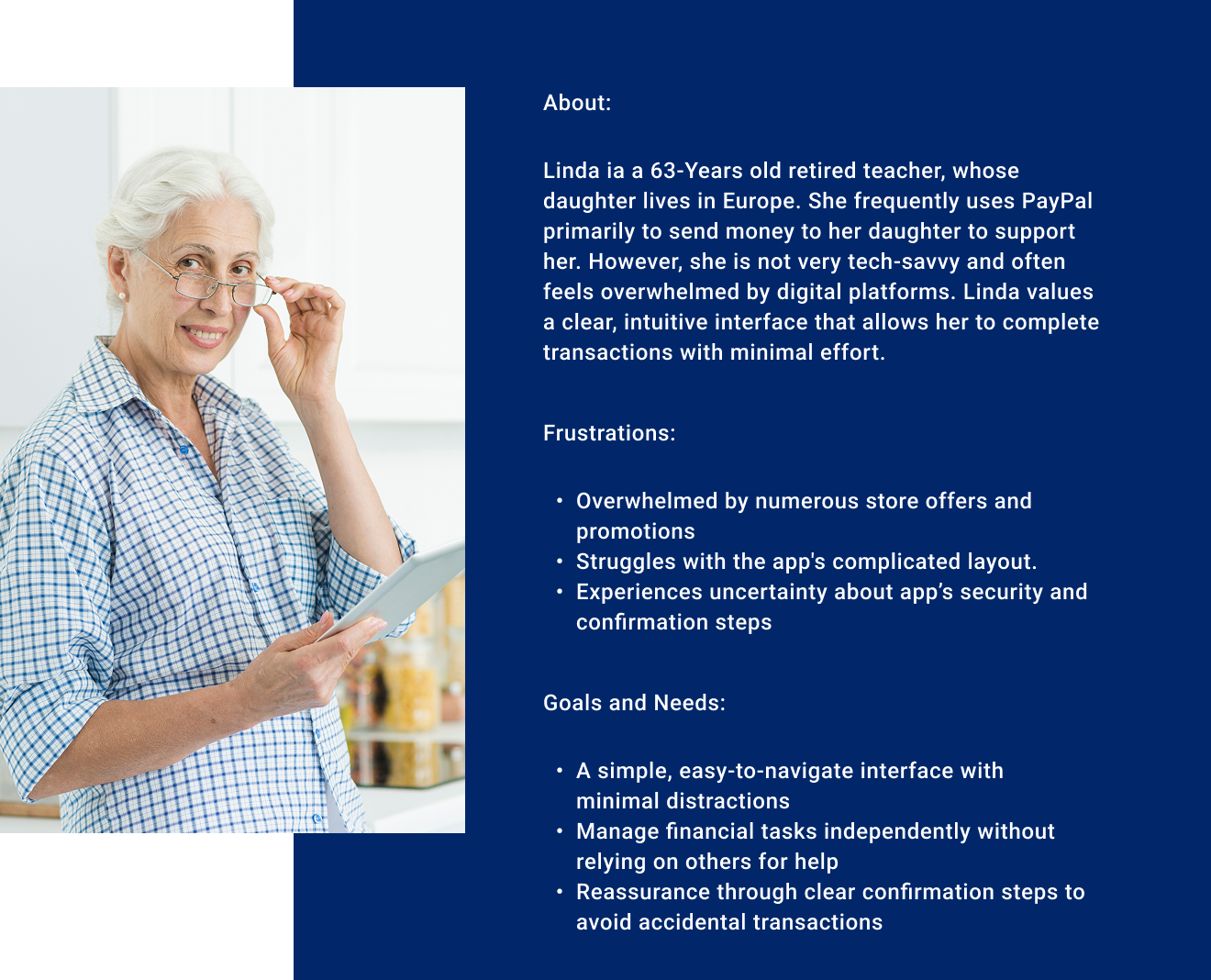

The Non-Tech-Savvy Casual User
We compared popular money transfer products used for both domestic and international transactions to understand how they help people make decisions. Through this analysis, we identified key features that enhance user experience, such as transparency, ease of use, and security—essential for financial decisions.
We analyzed the products commonly used in the USA and Canada.
Comparative Analysis
What are PayPal’s competitors doing


Zelle - Emphasizing minimizing errors
Zelle's extra confirmation steps, including double-check the recipient and the review and send page, help users ensure they are sending the right amount of money to the correct person. This process reduces errors and enhances security and builds trust by providing users with reassurance at every stage of the transaction.
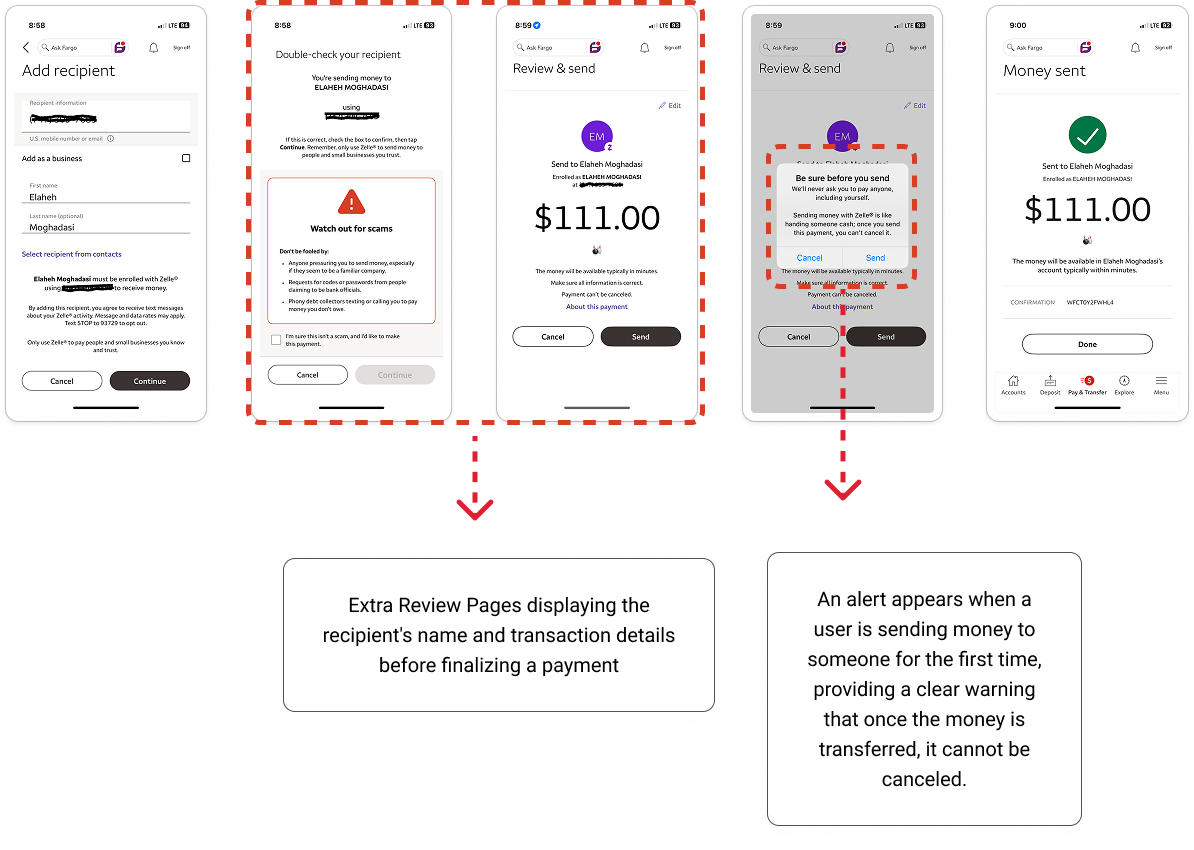

Wise - Emphasizing transparency
Wise provides transparency by offering users a clear breakdown of associated fees with every transfer. This approach enables users to make informed decisions without unexpected charges, enhancing transparency, trust, and confidence in the transaction process.


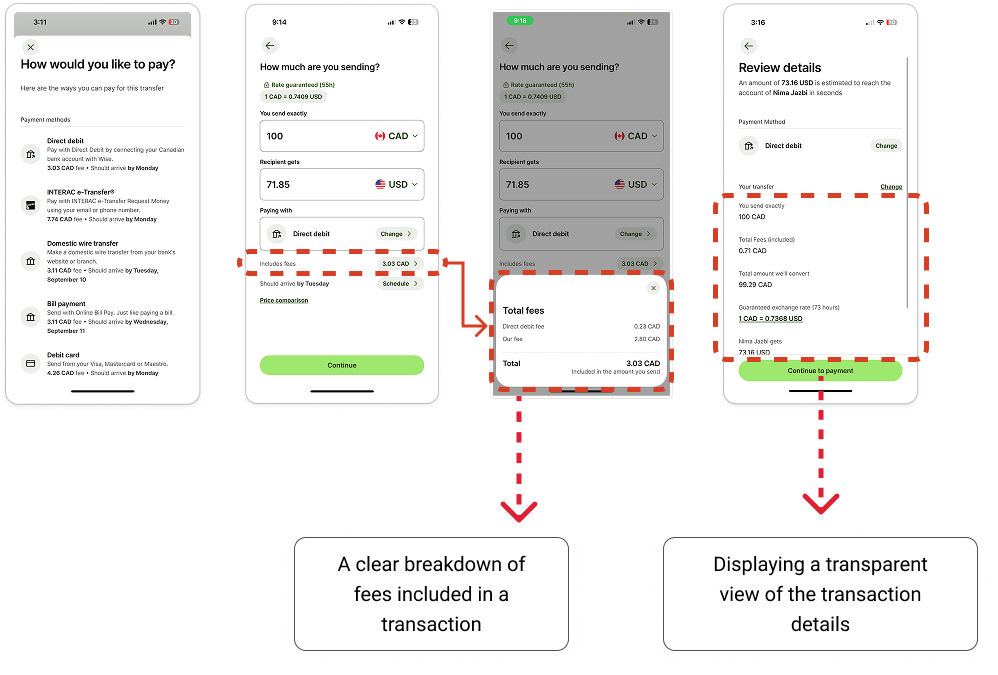

Revolut – Emphasizing quick and efficient in-app assistance
Revolut provides a strong in-app customer support , allowing users to easily manage open and closed cases directly within the app. By emphasizing a strong feedback system. Revolut collects insights from users on its help center, and support interactions to quickly address issues and improve services. This continuous feedback loop ensures that Revolut adapts to customer needs, offering a more responsive and efficient support experience, enhancing overall satisfaction.


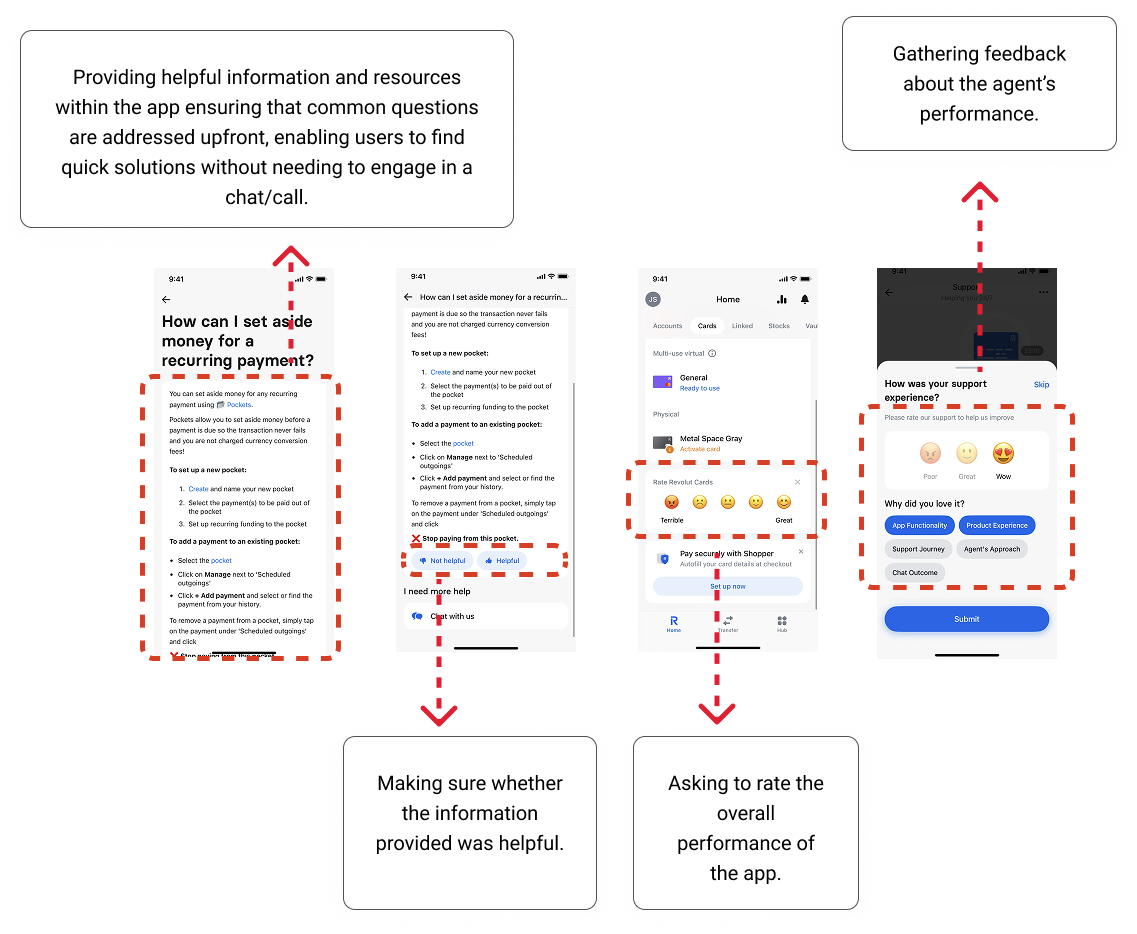


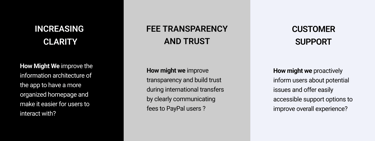
How Might We...
Exploring Solutions:
Turning Pain Points into Opportunities
Ideating on solutions:
Choosing the Right Ideas
Brainstorming and prioritization
We started with a brainstorming session to generate a variety of ideas to solve the pain points. Then we created an impact-effort matrix according to our insights and themes to prioritized and narrow down our solutions to implement.
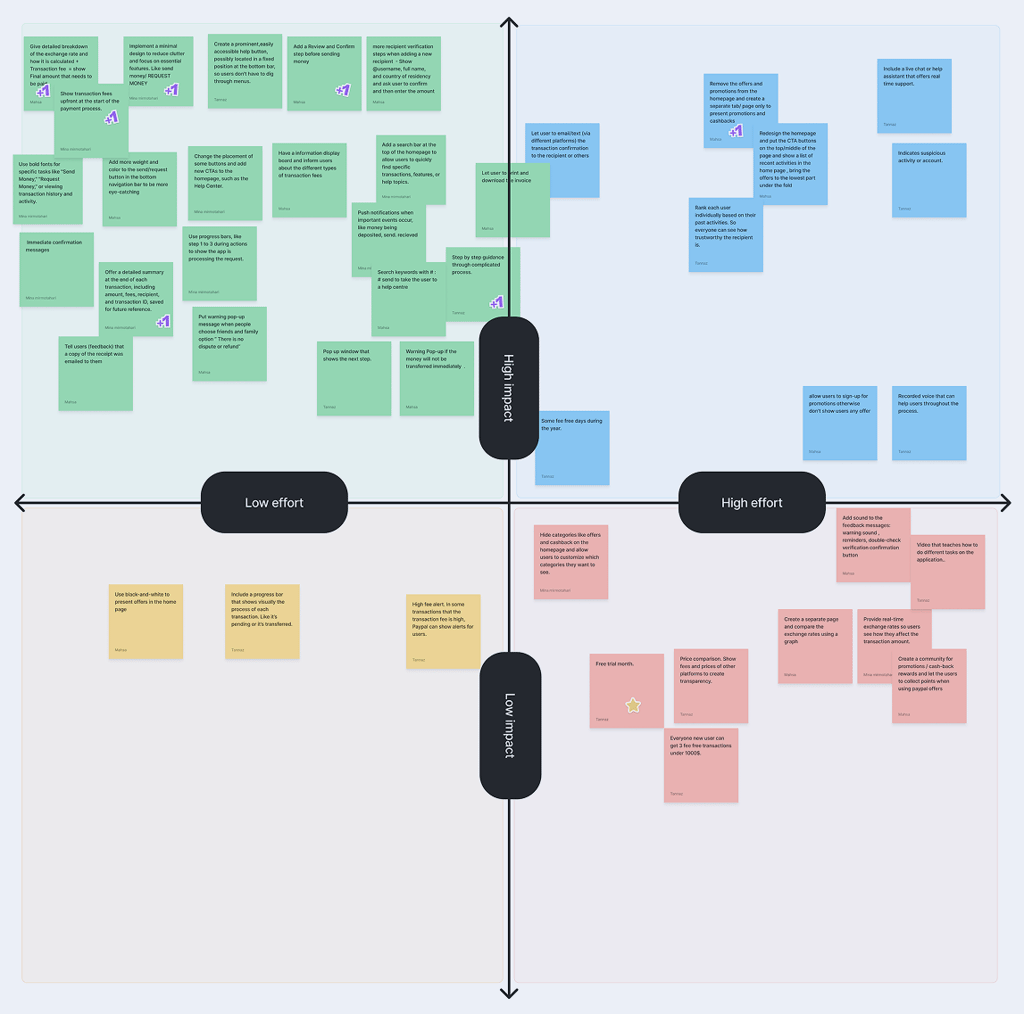

Designing the Vision:
Bringing Ideas to Life
High-Fidelity Design
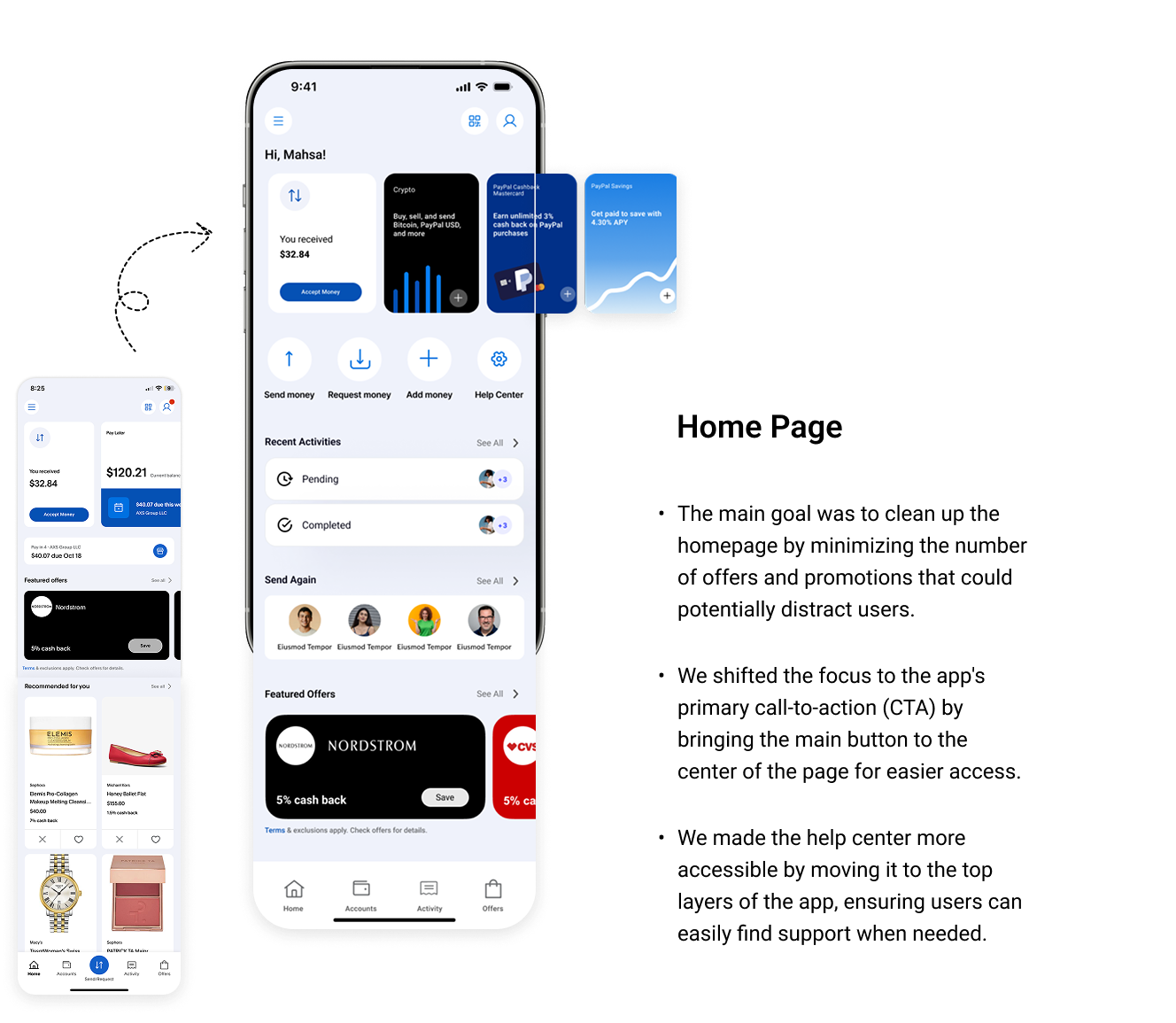

Send Money Flow - International Root
For the "Send Money" flow, our goal was to enhance security and build user confidence by adding additional layers of confirmation. We also aimed to improve clarity by displaying the associated fees upfront, ensuring users are fully informed before completing their transactions.
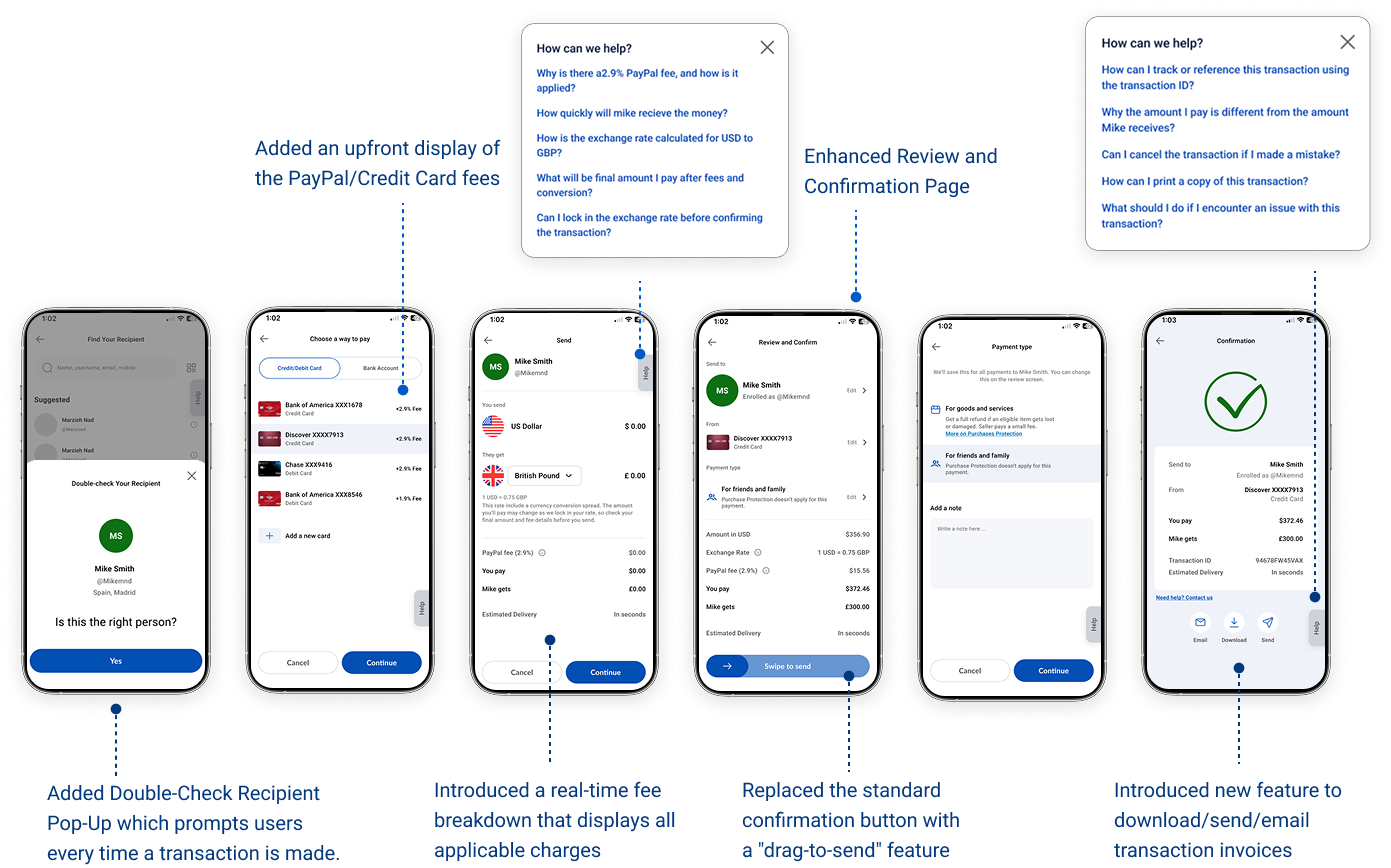

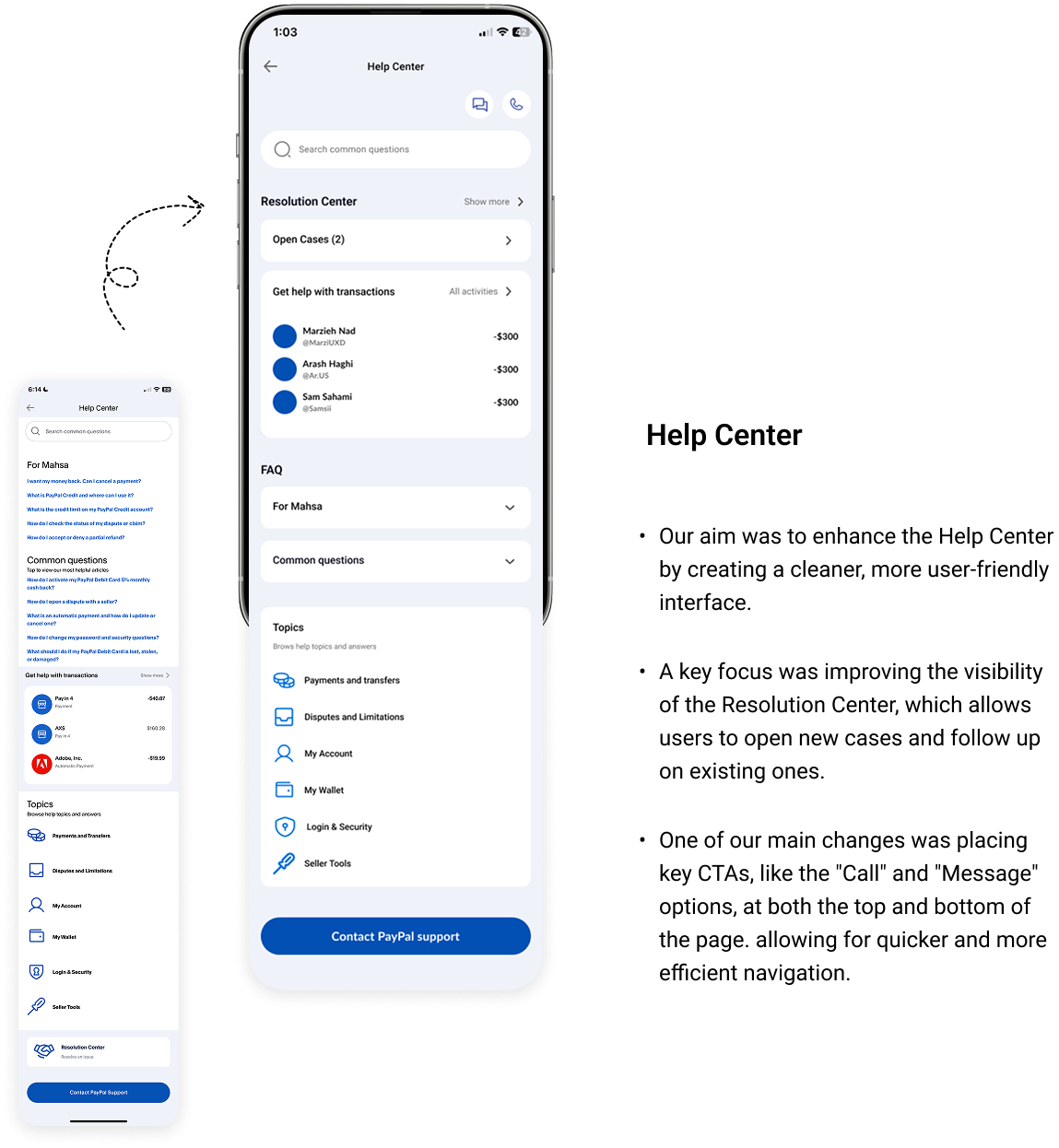

Feedback and Iteration
Refining the Design:
User Feedback Uncovered Help Center Remaining Challenges, Leading to Improved Accessibility and Support Features
After implementing the initial Hi-Fi design, we gathered feedback from users who had participated in the earlier interviews to assess the effectiveness of the design changes and ensure they met user needs.
This feedback session provided valuable insights into both the positive and negative aspects of the updates and led to a few iterations in the design of the Help center.


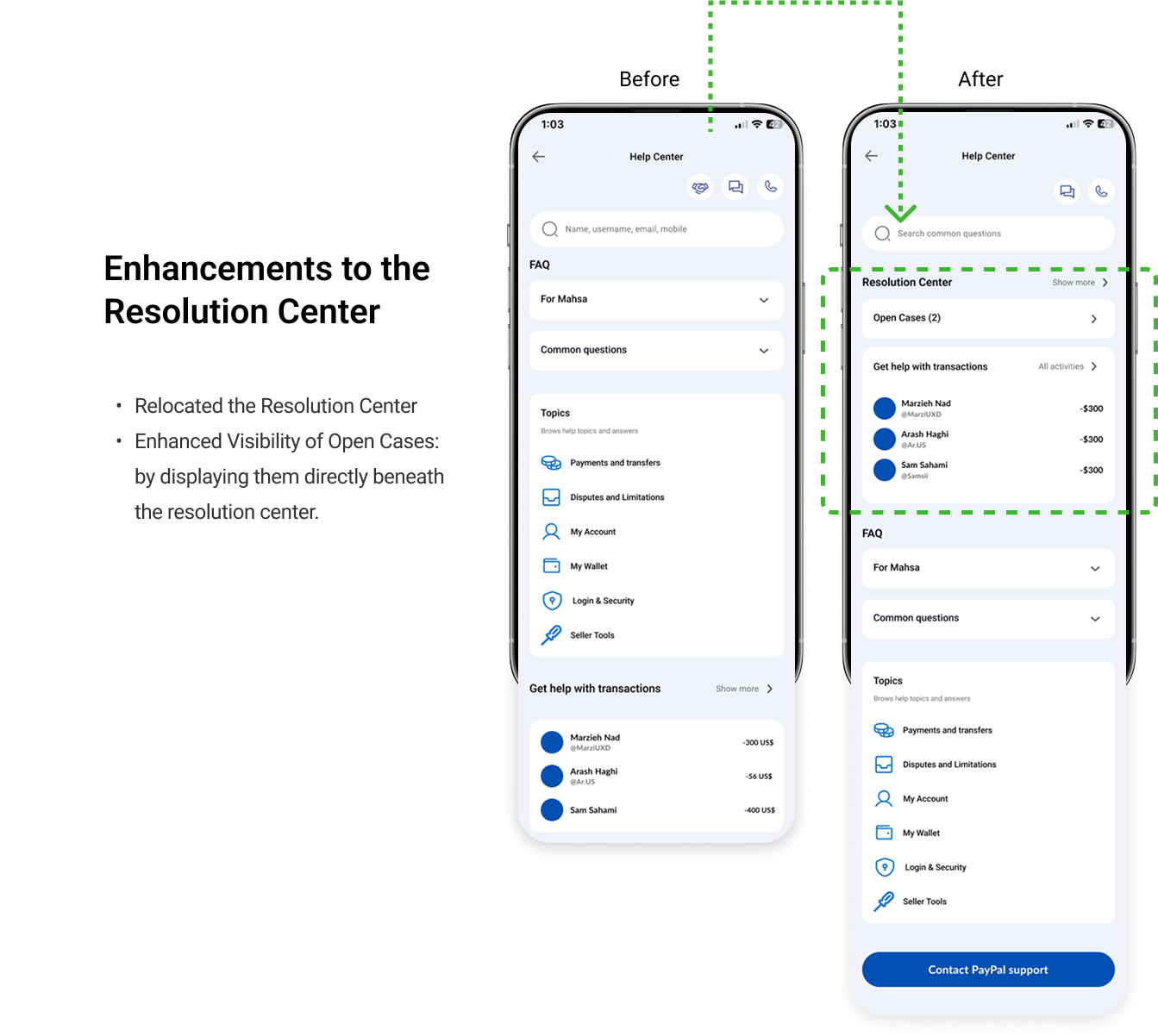

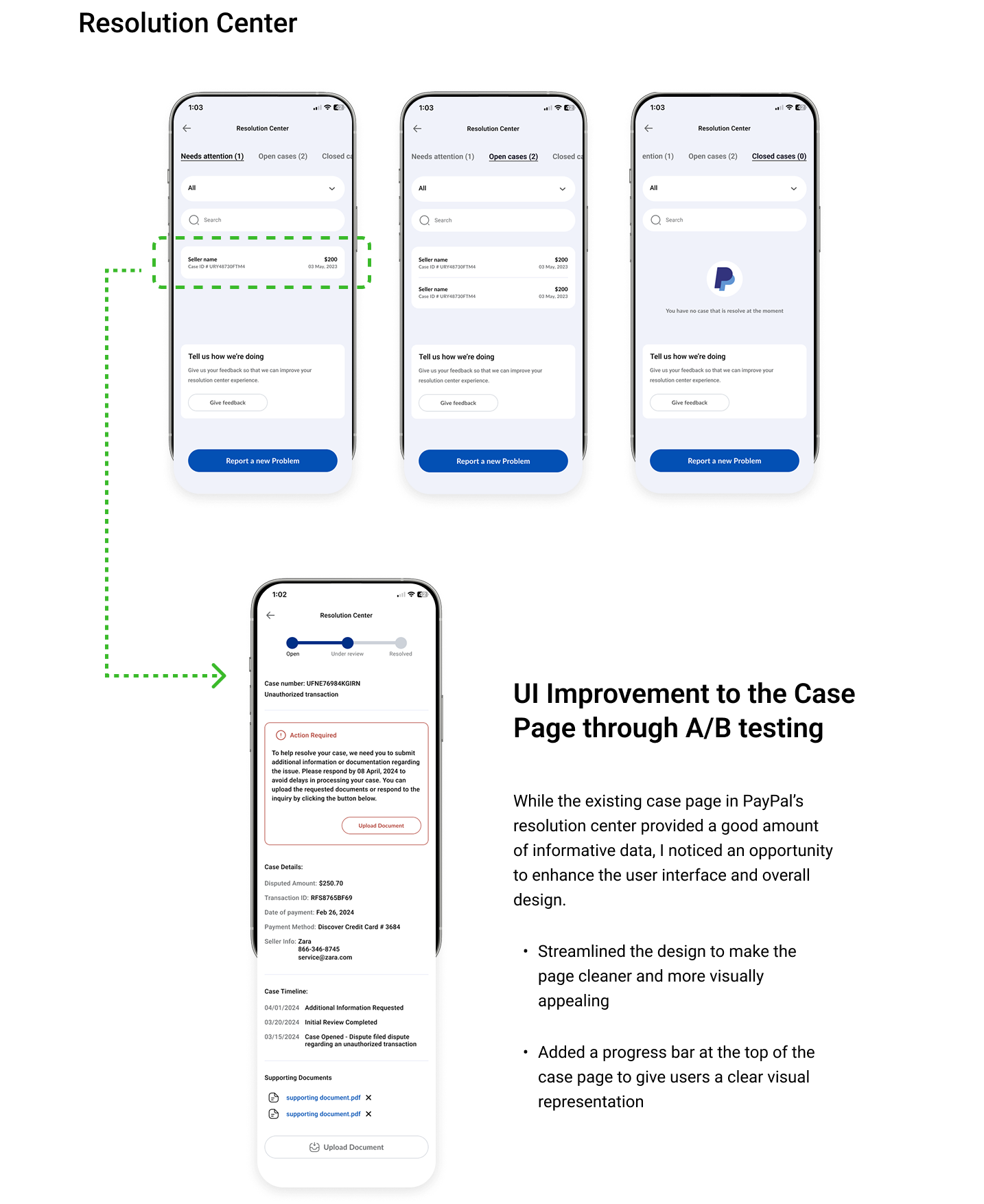

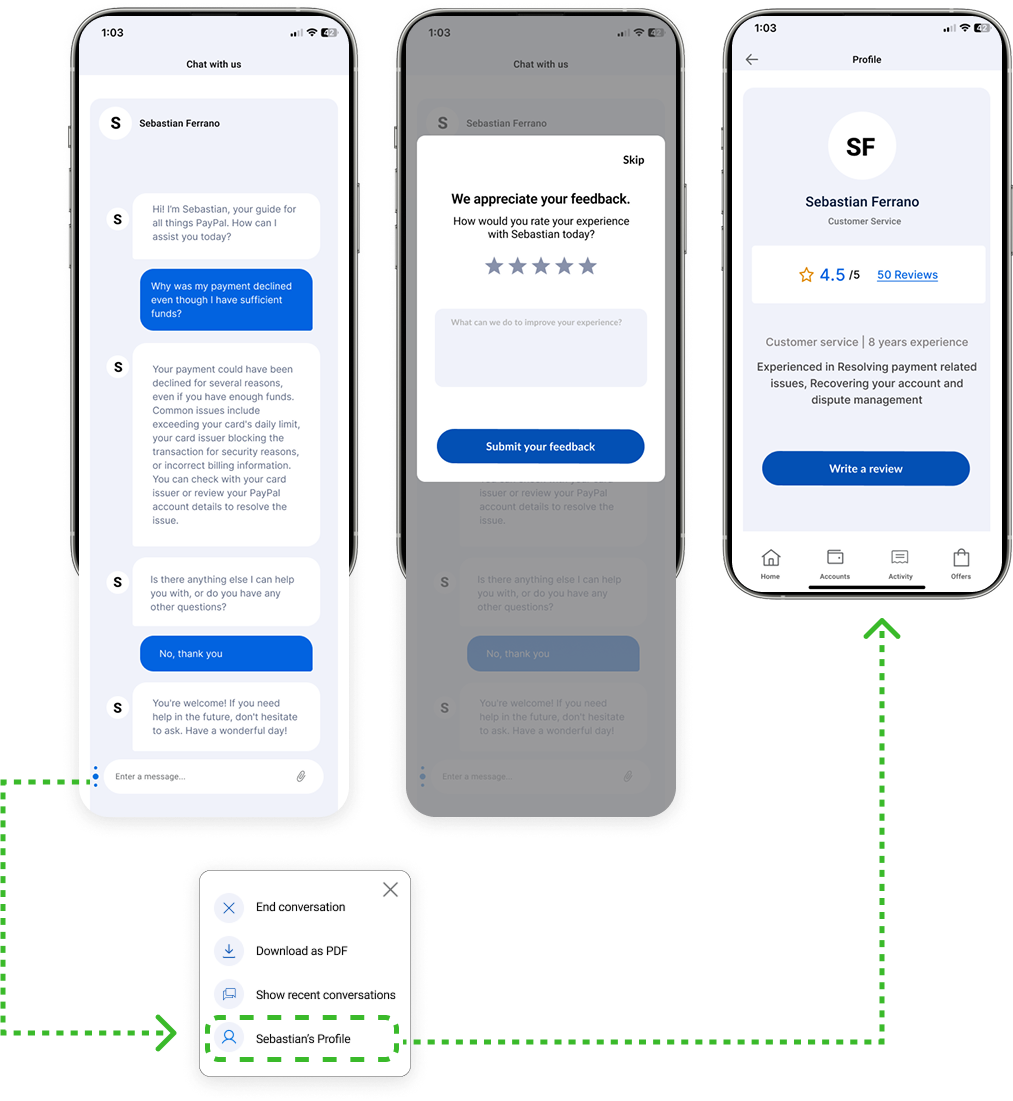

Key Takeaways: Lessons Learned
Users prioritize transparency in finance apps. Any confusion about fees or recipients can lead to feelings of insecurity.
In finance apps, users may have questions at any stage. A clearly visible and accessible help center can enhance their experience, providing greater confidence and comfort.
Working with finances, accounts, and transactions can be intimidating for some users. A simple, user-friendly interface can ease this process and improve overall performance.
Users appreciate additional security measures, such as double-checking recipient information and providing clear confirmations before transactions. These features can help alleviate anxiety around accidental payments and enhance the overall user experience.
Trust is a critical component of the user experience on payment platforms, significantly impacting user retention and business objectives. Users are more likely to remain loyal to PayPal when they feel secure in their transactions and well-informed throughout the payment process.
